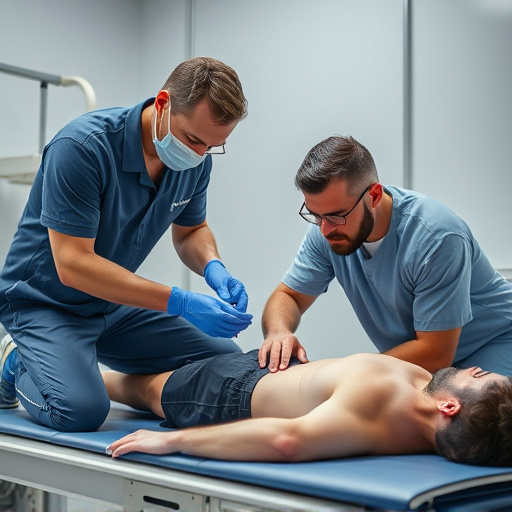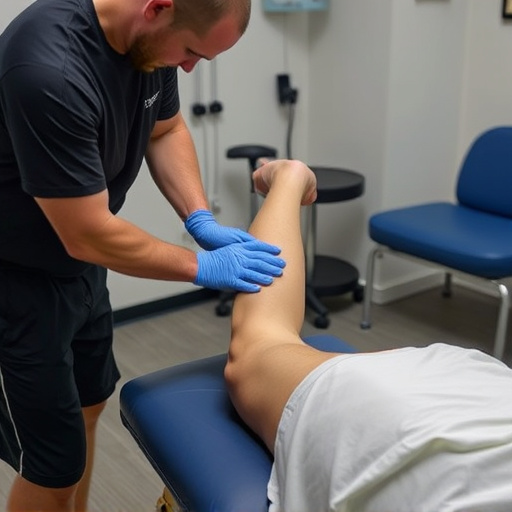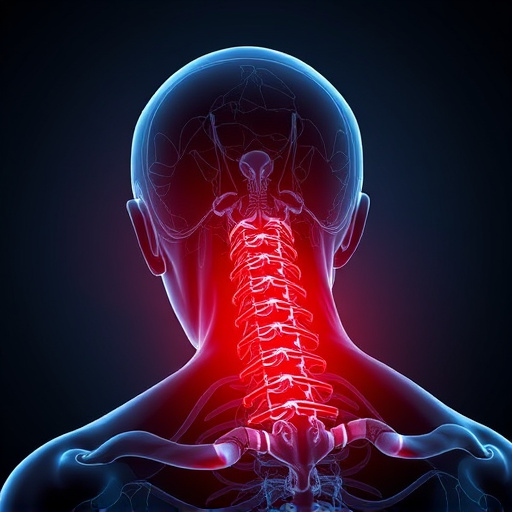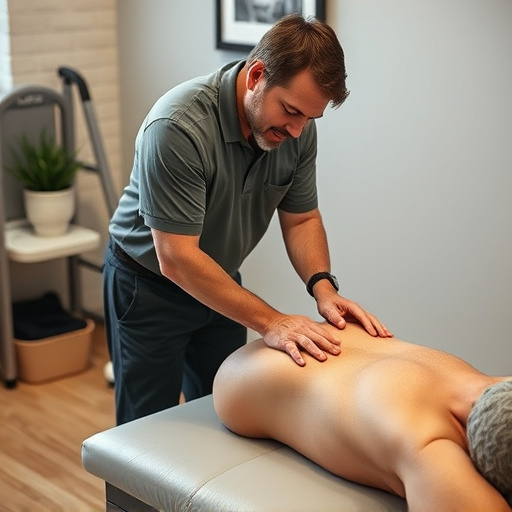Occupational injury treatment involves multi-faceted strategies, including immediate assessment, chiropractic care, physical therapy, and ergonomic adjustments, to safely return workers to their jobs. Holistic approaches addressing physical and psychological aspects ensure long-term recovery. Modern therapies like post-accident rehabilitation and spinal adjustments have transformed treatment, shortening recovery times. Preventive measures, such as ergonomic improvements, training, and wellness programs, reduce injury risks and promote employee well-being.
In today’s fast-paced work environments, understanding and effectively managing occupational injuries is more crucial than ever. This article delves into the most effective techniques in occupational injury treatment, exploring best practices that healthcare professionals and employers alike can employ. From understanding tailored treatment protocols to leveraging modern therapies for swift recovery, we examine strategies that prioritize worker safety and well-being. Additionally, we highlight preventive measures as a cornerstone of long-term success in mitigating workplace injuries.
- Understanding Occupational Injury Treatment Protocols
- Modern Therapies for Rapid Recovery
- Preventive Measures: Key to Long-Term Success
Understanding Occupational Injury Treatment Protocols

Occupational injury treatment protocols are designed to provide efficient and effective care for workplace-related injuries, ensuring employees return to work safely and quickly. These protocols often involve a multi-faceted approach, combining medical interventions with rehabilitation strategies tailored to each individual’s needs. Understanding these protocols is crucial for both employers and employees alike, as it facilitates proactive measures to prevent injuries and swift recovery when they occur.
The process typically starts with an immediate assessment of the injury, focusing on pain management and stabilization. For common issues like lower back pain or whiplash treatment, chiropractic care may be recommended early on. Subsequent steps involve specialized treatments, such as physical therapy, ergonomic adjustments at the workplace, and, in severe cases, referral to occupational medicine specialists. A holistic approach that considers both the physical and psychological aspects of recovery is essential for successful long-term outcomes, ensuring employees return to their full capabilities without residual pain or disability.
Modern Therapies for Rapid Recovery

In today’s digital age, modern therapies have emerged as game-changers in the realm of occupational injury treatment. Gone are the days when recovery was a lengthy process. Advanced techniques like post accident rehabilitation and specialized car accident injury care have revolutionized the way we approach workplace injuries. These innovative approaches focus on both physical and mental aspects, ensuring swift and comprehensive healing.
One notable method is the integration of spinal adjustments in treatment plans. This technique, often employed by professional chiropractors, aims to restore proper alignment and functionality of the spine, which can significantly impact overall health and accelerate recovery from various types of occupational injuries. By combining these modern therapies with traditional care, healthcare professionals are enhancing the effectiveness of occupational injury treatment, enabling individuals to return to their daily routines promptly.
Preventive Measures: Key to Long-Term Success

Preventive measures play a pivotal role in the long-term success of occupational injury treatment. By focusing on ergonomic improvements, regular employee training, and comprehensive wellness programs, workplaces can significantly reduce the risk of injuries. Ergonomic assessments and adjustments to workstations, equipment, and job tasks can help alleviate stressors that commonly lead to joint pain relief, neck pain relief, and other discomforts.
Additionally, implementing robust safety protocols and providing ongoing education on proper lifting techniques, use of personal protective equipment (PPE), and injury prevention strategies empower employees to take an active role in their well-being. These proactive approaches not only minimize immediate risks but also contribute to effective pain management, ensuring a healthier and more productive workforce.
Occupational injury treatment has evolved significantly, integrating modern therapies and preventive measures that expedite recovery and ensure long-term success. By understanding tailored protocols and adopting proactive strategies, we can minimize workplace risks and enhance employee well-being. These effective techniques not only accelerate the healing process but also contribute to a safer and more productive work environment, making them vital components in the realm of occupational injury management today.














